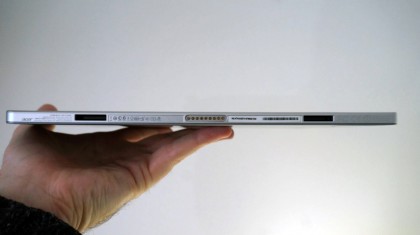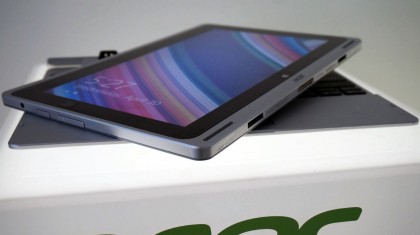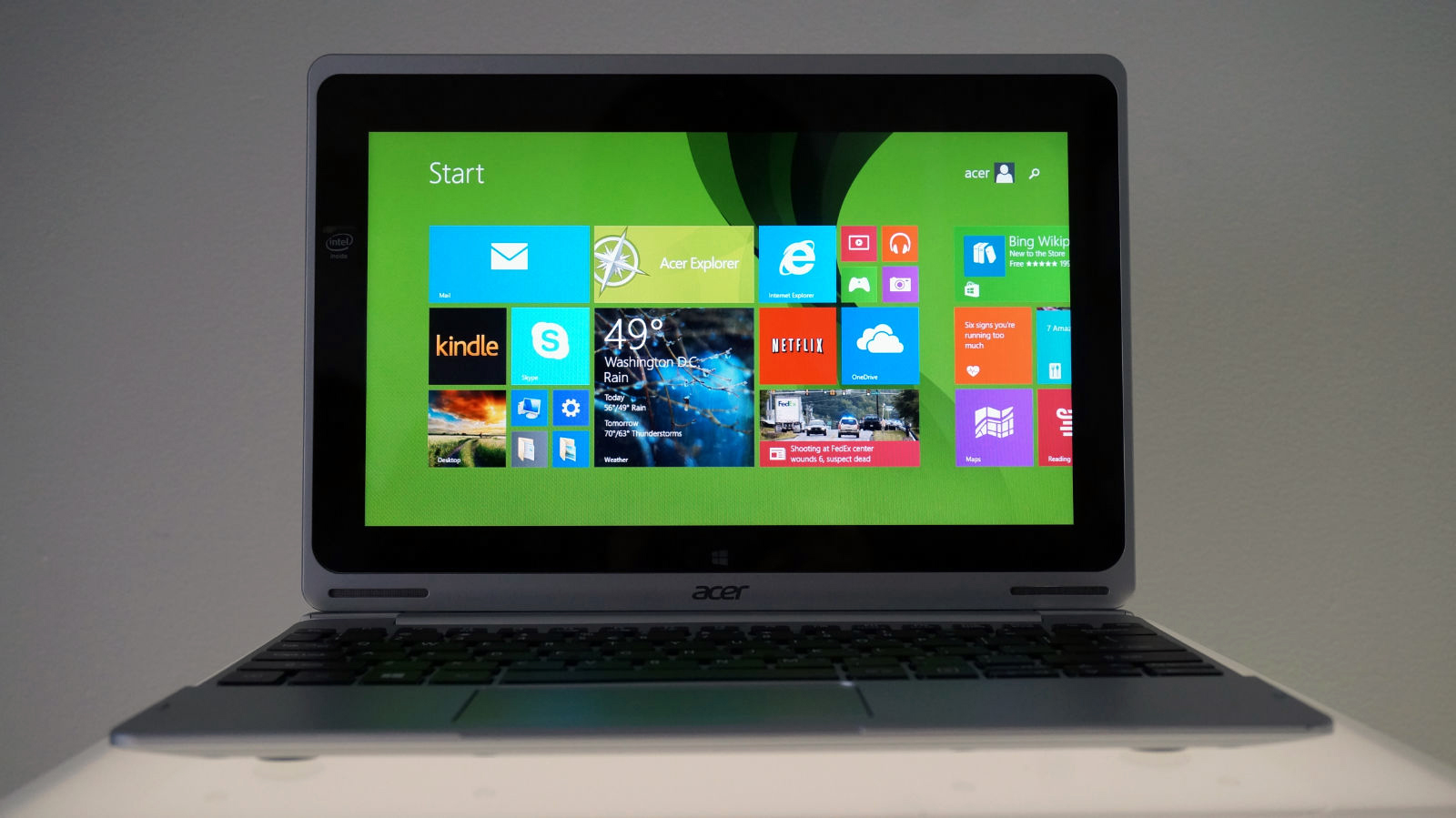Why you can trust TechRadar
I ran the standard suite of laptop benchmarks, including 3DMark, Cinebench and PCMark08, fully aware that with a low-power, low-priced tablet, the results would be significantly lower than you'll see with premium laptops or desktop PCs.
Acer apparently describes the device as being at the intersection between content consumption and creation. Content creation can mean different things to different people though. Obviously, this is not the best form factor for heavy Photoshop work – neither the performance nor screen size are up to it. But when docked with the keyboard, it's more than suitable for essay writing, entering data into a spreadsheet or working on Powerpoint presentations.
In terms of media consumption, the Switch 10 performs perfectly well with HD video. Avatar played absolutely fine in 1080p from an external USB hard disk.

I mentioned old LucasArts games at the start of this article for good reason – they're great fun (check out Day Of The Tentacle if you don't believe me), but they're also guaranteed to fit within the performance envelope of the Acer Aspire Switch 10. Modern games, less so.
3DMark lows
3DMark scores reached an all-time low with the Switch 10. If you buy a Microsoft Surface tablet or a recent Haswell-powered Ultrabook, you can enjoy some modern games on it, by keeping resolution and detail settings at reasonable levels. But you definitely won't be able to do that with the Switch 10.
The Zotac ZBox Sphere, a desktop mini PC powered by an Intel Core i5 processor with mid-range integrated graphics, achieves fairly middling results in 3DMark, but those were between three and five times what the Switch 10 managed. 1,349 points in the Cloud Gate benchmark is a low score. The Asus UX301LA scored 5,151 in this test, while a premium HP ZBook mobile workstation with a discrete Quadro K4100M scored 15,206.
Cinebench is a great synthetic benchmark since it runs on just about anything. But since the Switch 10 is only a 32-bit system, I had to rely on the older version in my tests. In Cinebench 11.5, the Aspire Switch 10 managed just 6.72 fps, with the benchmark noticeably chugging along. The CPU test was a mere 1.24 points.

Not so flash?
While running the benchmarks and using the Switch 10, application load times felt noticeably long. Tablets generally use flash storage that is far slower than a typical high-end SSD – so I ran Crystal Disk Mark for some quick figures. The software reported reasonable sequential read speeds of 145.5 MB/s, but low write speeds of 46.6 MB/s.
That said, boot times on the device are fine. You won't be forced to sit and watch the swirly Windows 8 logo for much more than 20 seconds. And to be honest, although the benchmark results look poor, Windows never felt particularly slow on the Aspire Switch 10. It's no workstation, but it will be fine for light use.
The final test, and perhaps the most crucial for a mobile device, is battery life. For this I set the screen's brightness to 80%, then ran the PCMark08 battery test. This test is generally more gruelling than a simple movie playback test, and you can expect any device will last longer during light use. Some laptops with especially poor battery life manage no better than 3 hours. The Acer Aspire Switch 10 clocked in at 4 hours 42 minutes. That's not bad at all.
